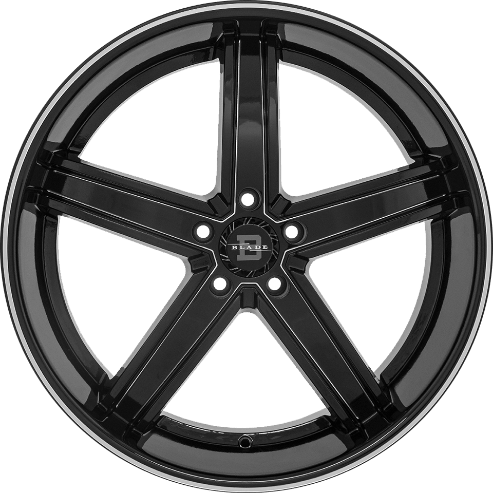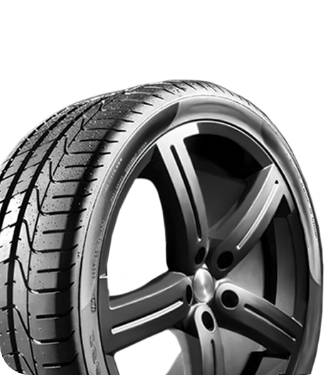

A Step-by-Step Guide to Properly Torque Your Lug Nuts
Safety Tips |Incorrect torque, whether too loose or too tight, can lead to dangerous situations, including wheel detachment or damage to vehicular components. This step-by-step guide to properly torque your lug nuts will take you through the whole process, from the equipment you need to the final checks.
The Importance of Proper Lug Nut Torque
Lug nuts may be small, but they bear weighty responsibilities. These nuts secure the wheel to the hub of your vehicle, making them critical for safe driving. When lug nuts aren’t tightened enough, they risk coming loose, potentially causing the wheel to detach while the vehicle is in motion.
Overly tightened lug nuts can damage the threads or warp the wheel hub, leading to costly repairs. Properly torquing your lug nuts safeguards against these risks, providing even distribution of pressure across the wheel, enhancing your vehicle’s handling, and improving braking performance. This simple but important task can save you from potential accidents, expensive repairs, and even the hassle of being stranded on the side of the road.
Tools and Equipment You’ll Need
Before we take you through the process of torquing your vehicle’s lug nuts, you’ll need certain tools and equipment, including:
- Torque wrench: This is the most important tool to apply the specific amount of torque recommended by the manufacturer.
- Jack and jack stands: These components are handy to safely lift and support your vehicle.
- Tire iron or breaker bar: You need a breaker bar or tire iron to loosen the lug nuts before torquing.
- Cheater bar: Although optional, a cheater bar provides extra leverage if the lug nuts are especially tight.
- Protective gloves and safety glasses: Safety should always be first, so don’t forget your protective equipment.

Preparing Your Vehicle for the Process
You’ve got your equipment, so now it’s time to prepare your vehicle. Park on a level surface, engaging the parking brake to prevent accidental movement. When working on a tire, you must lift it and loosen the lug nuts with your tire iron while the wheel is still on the ground to make the process easier without putting strain on your tools.
Next, safely lift the vehicle using a jack, positioning it securely on jack stands. Never rely solely on a jack to support your car, as it could collapse unexpectedly. Check that the vehicle is stable before proceeding.
How to Torque Your Lug Nuts
With tools in hand and your vehicle elevated on secure jack stands, we can begin. Our step-by-step guide to properly torque your lug nuts will explain in detail everything you need to know.
Step 1: Consult the Owner’s Manual
Before you begin, refer to your owner’s manual for your vehicle to find the recommended torque specification. Mechanics measure torque in foot-pounds (ft-lb) or Newton meters (Nm), so calibrate your torque wrench accordingly. For most standard passenger vehicles, the range is 80 to 120 ft-lb, but always follow the manufacturer’s specific guidelines.
Step 2: Position the Wheel
Carefully lift the wheel and align it onto the hub, ensuring the holes on the wheel match up perfectly with the bolts on the hub. Take your time with this step to avoid misalignment. Next, thread the lug nuts onto the bolts by hand to avoid cross-threading. Cross-threaded nuts can damage the bolts, weaken the connection, and compromise safety, so this step is crucial. Double-check that the wheel is flush against the hub before continuing.
Step 3: Tighten Lug Nuts by Hand
After threading the lug nuts onto the bolts, tighten them by hand until they’re snug to achieve proper alignment of the wheel. Avoid using a wrench or another tightening tool at this stage, as forcing the nuts too early can damage the threads or cause the wheel to sit unevenly.
Step 4: Use the Torque Wrench
With the lug nuts snugly in place, it’s time to use your torque wrench to tighten the nuts to the torque level your vehicle’s manufacturer recommends. Adjust the wrench to the right setting, then tighten each nut slowly and steadily.
Listen and feel for the click of the torque wrench, which indicates the reaching of the desired torque. Over-tightening can damage the bolts, so stop immediately once the wrench clicks. Repeat this process for each lug nut for balanced, secure tightening.

Step 5: Follow the Star Pattern
When tightening the lug nuts with the torque wrench, always follow a star or crisscross pattern. This means tightening one lug nut, skipping the next, and continuing this sequence until all nuts are evenly torqued.
The star pattern distributes pressure evenly across the wheel, preventing it from warping or sitting unevenly on the hub. Uneven tightening can lead to misalignment, vibrations, or loosening over time, so this step is essential for a secure fit.
Step 6: Do a Final Check
After setting all lug nuts to the correct torque tightness, perform a final check. Give each nut a quick inspection, checking that it’s properly seated and tight to the proper level. Look over the wheel to ensure it’s mounted evenly and securely on the hub. Lower the vehicle off the jack or jack stands, lightly shaking the wheel to confirm that it’s securely in place. With this final check complete, your vehicle is now ready to hit the road safely and confidently!
Maintaining and Re-Torquing
Torque checks don’t stop after installation. For safety and longevity, you should periodically verify that your lug nuts are at the correct torque level. Re-torque your lug nuts about 50 to 100 miles after installation.
Inspect for Wear and Damage
Regularly check your lug nuts and bolts for signs of wear or damage. Look for rust, stripped threads, or unusual resistance when tightening or loosening. If you spot any of these issues, replace the affected components immediately.
Adapt Maintenance for Heavy Use
If you frequently tow trailers, haul heavy loads, or drive on rough terrain, your lug nuts are under greater stress. These conditions can impact torque over time, so it’s a good idea to inspect and tighten lug nuts more often to maintain optimal safety.
Find Wheels, Tires, and Lug Nuts at RNR Tire Express
Now that you’ve read our guide, you’re ready to tighten your vehicle’s lug nuts. If you need tools or equipment for the job, the RNR Tire Express tire shop in Tucson can help! We’re not just about tires but the entire wheel, and we offer an extensive inventory of tire and wheel tools and services. If you’d like a professional to tighten your vehicle’s lug nuts, we can do that too. Stop by one of our nationwide stores or book an appointment with a wheel and tire expert today.





